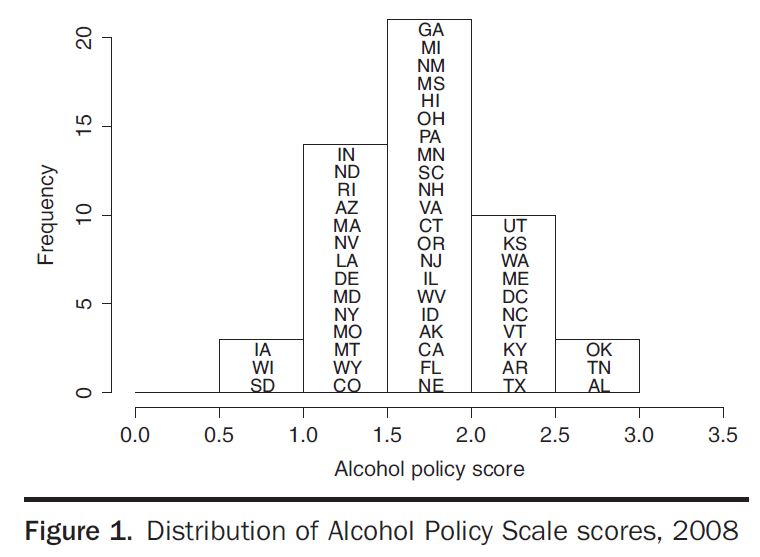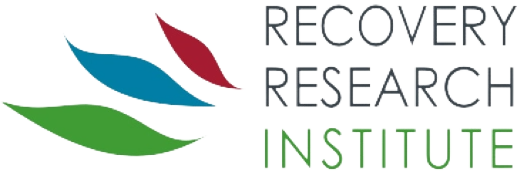How Effective are State Public Policies on Reducing Binge Drinking?
Policy change, in the form of laws and other regulations, can be powerful and far-reaching in reducing harmful substance use at a broader societal level.
Even very small reductions in alcohol consumption at the population level can have a very positive impact on the overall public health of a community, city, state, or country.
WHAT PROBLEM DOES THIS STUDY ADDRESS?
There are many “evidence-based” policies that lead to reductions in alcohol consumption; that is, rigorous studies indicate they lead to overall reductions in a given population. Little is known, however, about how these alcohol-related policies may work in combination, and whether they are associated with reduced binge drinking (on at least one occasion in the past month, 5+ drinks for a male, and 4+ drinks for a female), a particularly harmful drinking pattern.
HOW WAS THIS STUDY CONDUCTED?
Naimi and colleagues measured the relationship between the extent to which a state has enacted alcohol policies in one year and the presence of binge drinking in the following year in that state.
The Alcohol Policy Scale was comprised specifically of 47 state-level alcohol policies as informed by 10 alcohol policy experts.
Policy examples include:
- changes in the alcohol excise tax (e.g., for each purchase)
- sobriety check-points
- restrictions on alcohol outlet density (limiting number of stores that are licensed to sell alcohol in a given area)
A state’s value on the scale in a given year reflected:
a) to what degree the policy was implemented in the state
b) how strongly the policy reduced overall drinking rates in prior scientific studies, and c) the quality of the study (or studies) in which the policy was evaluated
Authors used several statistical analyses to test whether, at the state level, the Alcohol Policy Scale score in a year was related to reduced binge drinking in the following year (e.g., score in 2000 associated with binge drinking in 2001). They examined the effect of Alcohol Policy Scale scores between 2000-2010 and binge drinking, as measured by the Behavioral Risk Factor Surveillance System between 2001-2011.
WHAT DID THIS STUDY FIND?

Alcohol policy scores were significantly and substantially related to reduced binge drinking, explaining about 30% of its variability – i.e., 30% of whether a state had low, medium, or high levels of binge drinking can be explained by its alcohol-related policies. It is important to note that this is a very strong effect.
Alcohol policies may have a substantial impact on binge drinking at the state level. The effects observed in the current study are markedly larger than those observed for even the strongest psychosocial and psychopharmacological interventions.
Even when accounting for several other population level variables including each state’s breakdown of gender, ethnicity, household income, religious identification, and density of police officers, alcohol policies remained statistically significant (very unlikely due to chance), and was the strongest effect by far.
Although this public health focused study, where the focus was the population of individuals in a state, does not speak to alcohol use disorder recovery per se, its findings suggest policies intended to constrain alcohol use can have a strong impact on reduced binge drinking. Given that binge drinking accounts for half of the deaths, two-thirds of healthy life years lost, and three-fourths of the economic costs attributable to alcohol, reductions in binge drinking vis-à-vis stronger alcohol policy environments will save lives, improve health, and reduce the financial costs (e.g., health care and criminal justice) of alcohol on society.
WHY IS THIS STUDY IMPORTANT
Research that examines the association between the presence of evidence-based alcohol policies in U.S. states and reduced binge drinking could inform policy changes at a state-level, which might potentially yield marked improvement in residents’ overall public health and public safety (e.g., reduced violence, drinking and driving).
This study suggests state-specific alcohol policies, on their own, could influence harmful and hazardous alcohol use substantially.
Thus, it is worth noting that treatment/recovery research should take into consideration the state in which someone lives when examining the effects of a particular intervention and comparing it across states. The policy context in each state could interact with the effect of any public health alcohol prevention program or alcohol interventions.
- LIMITATIONS
-
- It is possible that overall attitudes toward alcohol in a state may be a third variable that is explaining both stronger alcohol policies and reduced binge drinking. However, as the authors point out, the policies that comprised the scale were derived from research showing reductions in binge drinking followed the implementation of the policy, suggesting the policy is at least partially causing these observed reductions.
- It is important to note, however, as some researchers have written about extensively, we cannot necessarily apply research focused on a population – also called “ecologic” analyses – to an individual because its analyses are controlling for potential alternative explanations of the results using population data. In other words, the analyses in the current study do not control for an individual’s religious preference, which is known to predict alcohol consumption, but rather the proportion of individuals in each state with a particular religious preference (see here and here).
NEXT STEPS
Next steps are to determine whether the relationship between alcohol policies and reduced binge drinking holds for particularly vulnerable subgroups, such as those who live in impoverished communities, or college students where the culture and social narratives are supportive of alcohol consumption, and especially binge drinking.
BOTTOM LINE
- For individuals & families seeking recovery: This study was focused on how state alcohol policies can reduce binge drinking. More research is needed to determine whether individual treatment and recovery outcomes are affected by the alcohol policies of the states in which you live.
- For scientists: This was a rigorous study measuring the effect of stronger alcohol policies on reduced binge drinking. State alcohol policies are variable and may confer a large effect on harmful/hazardous alcohol use. Next steps may include moderation analyses for particularly vulnerable subgroups. If conducting alcohol related research where the individual is the unit of analysis, strongly consider including an individual’s state of residence in your models if not already doing so, and using multi-level analyses (e.g., hierarchical linear modeling [HLM]).
- For policy makers: Strongly consider evidence-based policies shown to reduce alcohol consumption and binge drinking. This research shows that the extent to which you implement evidence-based policies strongly predicts reduced binge drinking, which will save lives and improve the public health of your constituency.
- For treatment professionals and treatment systems: In addition to your patients’ social context – which is often more readily considered – it may be helpful to think about the various alcohol-related policies and its impact on your patients’ alcohol-related behaviors. For example, patients living in communities without restrictions on alcohol outlet density may need more help in coping with greater exposure to alcohol cues that can elicit more cravings than those living in communities with greater restrictions on alcohol outlet density.
CITATIONS
Naimi, T. S., Blanchette, J., Nelson, T. F., Nguyen, T., Oussayef, N., Heeren, T. C., . . . Xuan, Z. (2014). A new scale of the U.S. alcohol policy environment and its relationship to binge drinking. Am J Prev Med, 46(1), 10-16. doi:10.1016/j.amepre.2013.07.015

